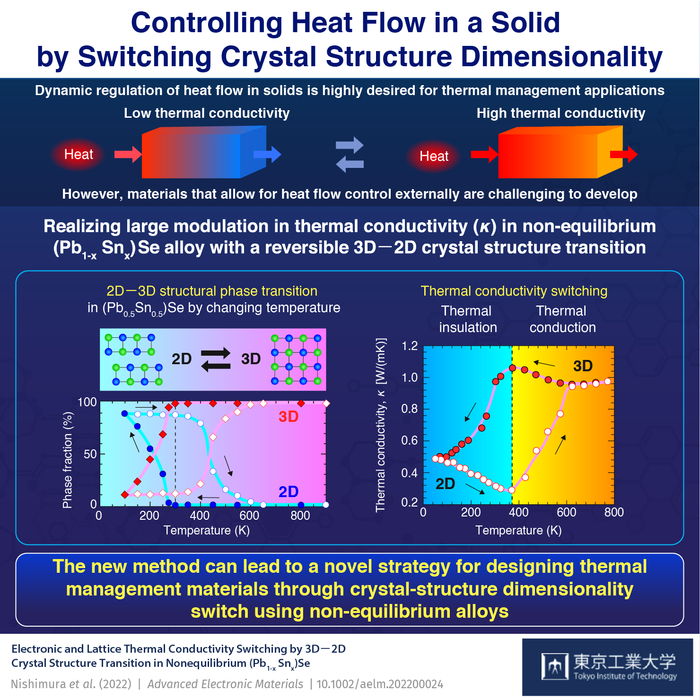Reviewed by Alex SmithApr 26 2022
Similar to how an electrical switch helps control the flow of electric current, thermal switches could also control the flow of heat.

Image Credit: Tokyo Institute of Technology.
Such switches act as thermal control devices and are beneficial for thermal management applications. For instance, they could be utilized in industries to decrease waste heat, leading to cost and energy savings. Such switches need materials whose thermal conductivity (κ) could be modulated to a big extent.
This would enable the switch to have an “on” and “off” state based on the thermal conductivity. But such materials are unique and difficult to develop, and also those that have been developed display only small reversible changes in their κ.
Currently, in a study reported in the journal Advanced Electronic Materials, scientists from the Tokyo Institute of Technology (Tokyo Tech) and the National Institute for Materials Science, Japan, have taken things forward. This is done with a material that exhibits the potential to obtain a big modification in its κ by altering its crystal structure dimensionality.
The researchers were able to achieve this exceptional feature with the help of a solid solution of tin selenide (SnSe) and lead selenide (PbSe). This can change between a 2-dimensional (2D) layered crystal structure and a 3-dimensional (3D) cubic crystal structure with variations in temperature.
As far as solids are concerned, two different processes are used in the transportation of heat, namely the flow of electric charge carriers and the vibrations of the crystalline lattice. Thus, the thermal conductivity of a solid relies on both the electronic structure and crystal structure.
In their study, it was possible for researchers to achieve various κ values in a (Pb0.5 Sn0.5)Se alloy by altering the crystal structure dimensionality as a result of the various arrangements of atoms and band gaps in each crystal structure comparable to the other.
The material we chose for our study is bulk polycrystals of (Pb0.5 Sn0.5)Se, which shows a direct phase boundary between the 3D and 2D crystal structures. We achieved this by thermally quenching the high-temperature solid solution phase to room temperature.
Takayoshi Katase, Professor, Tokyo Institute of Technology
Katase was involved in the study.
The scientists could reversibly swap between the 3D and 2D crystal structure dimensionalities of the (Pb0.5 Sn0.5)Se polycrystals by just heating and cooling the material.
When the material is in a heated state, a 3D crystal structure with a metallic electronic structure was assumed, leading to a high electronic as well as lattice thermal conductivity.
At the same time, on being subjected to cooling, it altered to a 2D crystal structure with a semiconducting electronic structure and a hugely reduced κ. At a temperature range of 373 K (100 °C), the κ for the 3D phase was noted to be 3.6 times higher compared to that for the 2D phase.
This latest method of altering κ could set the stage for the design of more materials like the one outlined above with possible applications in thermal management.
We believe that the present strategy will lead to a novel concept for designing thermal switching material through changing the crystal-structure dimensionality across non-equilibrium phase boundaries.
Takayoshi Katase, Professor, Tokyo Institute of Technology
A significant technological leap could thus be on the horizon.
Journal Reference:
Nishimura, Y., et al. (2022) Electronic and Lattice Thermal Conductivity Switching by 3D−2D Crystal Structure Transition in Nonequilibrium (Pb1−x Snx)Se. Advanced Electronic Materials. doi.org/10.1002/aelm.202200024.